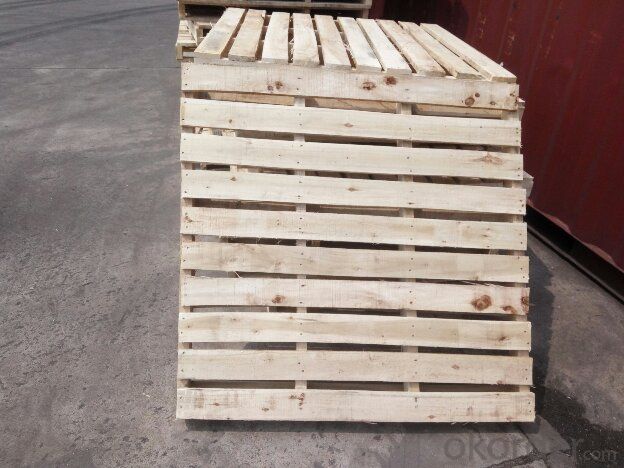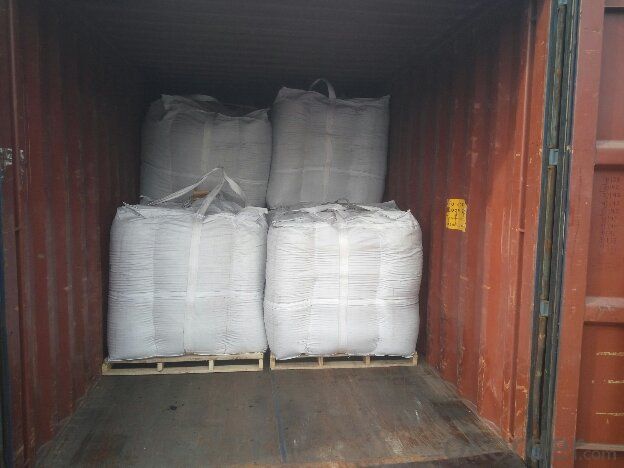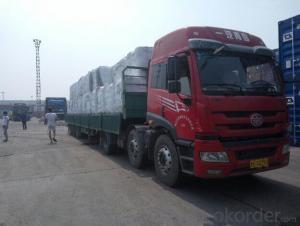Foundry Coke Made in Shandong in size 80-120MM
- Loading Port:
- Qingdao
- Payment Terms:
- TT OR LC
- Min Order Qty:
- 21.4
- Supply Capability:
- 1014 m.t./month
OKorder Service Pledge
OKorder Financial Service
You Might Also Like
Brief Introduction
Foundry Coke is the main fuel of melting iron in the oven. It can melt the materials in the over, make the iron reach great heat, and keep good air permeability by sustain stock column. Thus, the foundry coke should have the characteristics of big block, low reactivity, small porocity, enough anti-crush strengh, low ash and low sulphur. We are serving the world
The coke handled by our cooperation is made from superior coking coal of Shanxi province. Provided with the advantages of low ash, low sulphur and high carbon. Our coke is well sold in European, American, Japanese and South-east Asian markets. Our owned Coke plant are located in Shanxi Province and supplying of you many kinds of coke.
we supply Foundry Coke long-term, its characteristic is best strength, low sulfur and phosphorus,thermal stability.
Specifications:
ASH % | 8% max | 10% max | 12% max |
V.M.% MAX | 1.5% max | 1.5% max | 2% max |
SULFUR % | 0.65% max | 0.65% max | 0.7% max |
MOISTURE | 5% max | 5% max | 5% max |
Size | 80mm-120mm,80-150,100-150mm, or as request | ||
Features
1. Our quality is always quite good and stable which is producing and packing according to customers' requirements.
2. Putting Client profile into first, achieved mutual benefit.
3. Good partner on business. It's a good and wise choice for customers' to purchase from us. It's our great honor to cooperate with you. It is more -widely used around the world
4. We can supply documents as follows:
- bill of loading,
-Invoice,
-Packing List
-Insurance
-standard inspection pictures of the container as specified by INSPECTORATE
-or more requested by buyer.
Pictures


FAQ
1. What is the packing?
In 25kg bag/ In jumbo bags without pallet/ Two jumbo bags with one pallet/ or as customers’ request
2. What is the production capacity?
10 thousand tons per month
3 What is payment term?
Irrevocable LC at sight/ 20% down payment by T/T and 80% against BL copy byT/T/ or to be discussed
- Q:What are the impacts of carbon emissions on the stability of islands?
- The impacts of carbon emissions on the stability of islands are significant and wide-ranging. Carbon emissions contribute to climate change, which in turn leads to sea level rise, increased storm intensity, and ocean acidification – all of which pose great threats to the stability of islands. Sea level rise is one of the most immediate and visible impacts of carbon emissions on islands. As global temperatures rise, glaciers and ice caps melt, and ocean waters expand, causing sea levels to gradually increase. This rise in sea level puts low-lying islands at risk of inundation, erosion, and even disappearing completely. Many small islands, particularly in the Pacific and Indian Oceans, are already experiencing the effects of rising sea levels, leading to loss of land, displacement of populations, and destruction of infrastructure. Another impact of carbon emissions on islands is the increased intensity and frequency of storms. Warmer ocean temperatures fuel the formation of tropical storms and hurricanes, which can cause devastating damage to island communities. These storms can result in widespread destruction of homes, infrastructure, and ecosystems, leading to long-term economic and social disruptions. Islands are particularly vulnerable to storm surges, which occur when high winds push seawater onto land, causing extensive flooding and erosion. Ocean acidification, caused by the absorption of excess carbon dioxide by the ocean, is another significant impact of carbon emissions on islands. Increased levels of carbon dioxide in the atmosphere lead to increased absorption by the ocean, resulting in a decrease in pH levels and making the ocean more acidic. This acidification poses a threat to coral reefs, which are vital for island ecosystems and serve as natural barriers against wave action and storm surge. Coral reefs provide habitats for a wide array of marine life and are important for tourism and local economies. The loss or degradation of coral reefs due to ocean acidification affects not only the biodiversity but also the resilience of islands to climate-related impacts. Overall, the impacts of carbon emissions on the stability of islands are profound and severe. Rising sea levels, increased storm intensity, and ocean acidification all pose significant threats to the physical and social stability of island communities. Urgent action is needed to mitigate carbon emissions, invest in adaptation measures, and support island nations in building resilience to these impacts.
- Q:What is carbon pricing?
- Carbon pricing is a market-based strategy aimed at reducing greenhouse gas emissions by putting a price on carbon dioxide and other greenhouse gases. It involves either implementing a tax on carbon emissions or establishing a cap-and-trade system where companies are allotted a certain amount of emissions permits that can be bought and sold. The goal is to create financial incentives for industries to reduce their emissions and transition to cleaner and more sustainable practices.
- Q:What are the impacts of carbon emissions on the stability of wetlands?
- Carbon emissions have significant impacts on the stability of wetlands, which are highly sensitive ecosystems. One of the main consequences of carbon emissions is the increase in greenhouse gases, particularly carbon dioxide, in the atmosphere. This leads to global climate change and subsequent alterations in weather patterns, temperature, and precipitation. These changes in climate have direct and indirect effects on wetlands. Firstly, rising temperatures can accelerate the rate of evaporation, leading to a decrease in water levels within wetlands. This can lead to the drying out of wetland habitats, disrupting the delicate balance of species that rely on these areas for survival. As wetlands dry up, the plants and animals that depend on them for food, shelter, and breeding grounds are threatened. Additionally, increased carbon emissions contribute to sea-level rise, which poses a significant threat to coastal wetlands. Rising sea levels can cause saltwater intrusion into freshwater wetlands, leading to salinization of the soil and negatively impacting the vegetation and organisms that inhabit these areas. This intrusion also disrupts the delicate balance between freshwater and saltwater, affecting the diverse ecological functions provided by wetlands, such as water filtration, nutrient cycling, and flood control. Furthermore, carbon emissions contribute to the acidification of water bodies, including wetlands. The absorption of excess carbon dioxide by water leads to a decrease in pH levels, making the water more acidic. Acidic water can harm the plants, animals, and microorganisms in wetlands, affecting their growth, reproduction, and overall survival. This disruption in the wetland ecosystem can have cascading effects on the entire food web and biodiversity of these areas. Overall, carbon emissions have a profound impact on the stability of wetlands. The alteration of climate patterns, sea-level rise, and acidification of water bodies are all consequences of carbon emissions that threaten the delicate balance and ecological functions of wetlands. Recognizing the importance of wetlands and effectively mitigating carbon emissions is crucial for preserving these vital ecosystems and the myriad of benefits they provide, including flood mitigation, water purification, and habitat for numerous plant and animal species.
- Q:What is carbon nanoelectrode?
- A carbon nanoelectrode is a type of electrode that is made from carbon-based materials, typically in the form of a nanotube or nanowire. These electrodes are extremely small, with diameters on the nanoscale, typically ranging from a few to a few hundred nanometers. Carbon nanoelectrodes have unique properties that make them highly desirable for use in various applications, particularly in the field of electrochemistry. Due to their small size, they offer a large surface area to volume ratio, which allows for enhanced sensitivity and improved electrochemical performance. The carbon nanoelectrodes also possess excellent electrical conductivity and mechanical strength, making them ideal for use in miniaturized electronic devices and sensors. They can be easily integrated into various platforms, such as microfluidic systems or biosensors, enabling efficient and accurate detection of chemical or biological species. Moreover, carbon nanoelectrodes have shown great potential in energy storage devices, such as supercapacitors and batteries, due to their high electrical conductivity and large surface area, which facilitate rapid charge and discharge rates. Overall, carbon nanoelectrodes represent a promising advancement in the field of nanotechnology, offering unique properties and unparalleled performance for various applications in electronics, sensing, and energy storage.
- Q:Learn photography for nearly half a year, has always wanted to buy a tripod, want to buy carbon fiber tripod, what brand is better? The machine is D700+24-70About 3000 is too expensive ~ consider 1000 more just fine. Wage earners!
- In fact, only three foot two brands: brand and other brands of Gitzo
- Q:What is a carbon electrode? What's the use? What's the current situation in the industry? Try to be specific. Thank you
- According to the composition of the electrode material, the electrode can be divided into three categories.The first kind of electrode is metal electrode and gas electrode, such as zinc electrode and copper electrode in Daniel cell, and standard hydrogen electrode;The second kind of electrodes are metal metal insoluble salt electrode and metal metal refractory oxide electrode, such as Ag-AgCl electrode.Third kinds of electrode is redox electrode (oxidation of any electrode was as redox electrode, here said the reduction electrode is refers to taking part in the electrode reaction substances are in the same solution), such as Fe3+, Fe2+ electrode solution composition.An electrode is a conductor in which an electric current enters or leaves an electrolyte during electrolysis. Electrolysis is the oxidation reduction reaction at the electrode interface.The electrode is divided into a cathode and an anode, and the anode is connected with the anode of the power supply, and the anode is oxidized. The cathode is connected with the cathode of the power supply, and the reduction reaction is arranged on the cathode.There are many kinds of electrolytic materials. Carbon electrodes are commonly used. In addition, titanium and other metals can also be used as electrodes. In electroplating, the metal containing the coating metal is often used as an anode, and the plated product is used as the cathode.
- Q:How does carbon affect the formation of acidification in lakes?
- Lakes undergo acidification due to the significant role played by carbon dioxide (CO2). Human activities, such as burning fossil fuels, release carbon dioxide into the atmosphere. This carbon dioxide can then be absorbed by lakes, resulting in the formation of carbonic acid (H2CO3), a weak acid. When carbonic acid interacts with water, it dissociates into hydrogen ions (H+) and bicarbonate ions (HCO3-). The increase in hydrogen ions causes a decrease in pH levels, making the water more acidic. This process is commonly referred to as acidification. The acidification of lakes can have detrimental effects on aquatic ecosystems. It negatively impacts the physiology and behavior of various species, including fish, amphibians, and invertebrates. Furthermore, the eggs and larvae of these organisms can be damaged by acidic waters, hindering their growth and survival. Acidification also has the potential to disrupt the composition and abundance of phytoplankton, which are vital for maintaining the overall health of the ecosystem. Additionally, high levels of acidity can result in the leaching of toxic metals, such as aluminum, from the surrounding soil and rocks. These toxic metals then dissolve in the water, posing an additional threat to aquatic organisms. Acidification can also disrupt the nutrient cycles in lakes, ultimately affecting the availability of essential nutrients for plants and animals. To summarize, the presence of carbon dioxide in the atmosphere contributes to the acidification of lakes when it is absorbed by water. This acidification has a range of negative impacts on the aquatic ecosystem, including altered physiology, impaired reproduction, and disrupted nutrient cycles. It is imperative to reduce carbon emissions and mitigate the effects of acidification to safeguard the health and diversity of lake ecosystems.
- Q:What does "2T-250,1U-200@300" and "1Y-100" mean in carbon fiber cloth reinforcement?
- Upstairs to a very comprehensive, I made of carbon fiber cloth
- Q:What are the consequences of increased carbon emissions on forest ecosystems?
- Increased carbon emissions have significant consequences on forest ecosystems. One of the most notable impacts is the alteration of the climate and weather patterns. The excessive carbon dioxide in the atmosphere traps heat, leading to global warming. This rise in temperature can disrupt the delicate balance of forest ecosystems. Warmer temperatures can cause shifts in the distribution and composition of tree species, as some may struggle to adapt to the changing conditions. Another consequence of increased carbon emissions is the acidification of rainwater. When carbon dioxide combines with water vapor, it forms carbonic acid, which can fall as acid rain. Acid rain has detrimental effects on forest ecosystems, as it leaches important nutrients from the soil and damages tree leaves and other vegetation. This can weaken the overall health of the forest and make them more susceptible to diseases and pests. Furthermore, increased carbon emissions contribute to the intensification of wildfires. Higher temperatures and drier conditions provide the perfect environment for fires to spread and become more frequent. Forests that have evolved to withstand natural fire regimes may struggle to cope with the increased intensity and frequency of these fires. This can lead to the loss of biodiversity, destruction of habitat, and long-term degradation of forest ecosystems. Lastly, increased carbon emissions contribute to the phenomenon known as ocean acidification, where excess carbon dioxide is absorbed by the oceans. This acidification can affect the health of coastal and marine ecosystems, which are intricately connected to forest ecosystems. Many forest ecosystems, such as mangroves and salt marshes, provide vital nursery habitats for marine species. If these forest ecosystems decline due to carbon emissions, it can have cascading effects on the health and productivity of coastal and marine ecosystems. Overall, increased carbon emissions have far-reaching consequences on forest ecosystems. It alters climate patterns, causes acid rain, intensifies wildfires, and affects coastal and marine ecosystems. These impacts not only harm the trees and vegetation within the forests but also disrupt the delicate balance of the entire ecosystem, leading to loss of biodiversity and long-term degradation. It is crucial to mitigate carbon emissions and promote sustainable practices to minimize these consequences and preserve the health and integrity of forest ecosystems.
- Q:What are the impacts of carbon emissions on the stability of savannas?
- The impacts of carbon emissions on the stability of savannas are significant. Increased carbon emissions contribute to the greenhouse effect, leading to global warming and climate change. These changes in climate can directly affect the natural balance and stability of savannas. One of the main impacts is an alteration in rainfall patterns. Climate change can disrupt the regular rainfall cycles in savannas, leading to extended periods of drought or intense rainfall events. This can disrupt the ecosystem's natural fire regime, which is crucial for maintaining the savanna's biodiversity and preventing the encroachment of woody vegetation. Additionally, elevated carbon dioxide levels can promote the growth of certain plant species, particularly those that are more efficient at utilizing carbon dioxide. This can lead to changes in the composition and structure of savanna vegetation, favoring the growth of more dominant and invasive species. Such changes can potentially reduce the diversity and resilience of the savanna ecosystem. Furthermore, increased carbon emissions contribute to the acidification of rainwater and soils. This can negatively impact the nutrient availability and composition of savanna soils, affecting the productivity and health of the entire ecosystem. Overall, carbon emissions pose a significant threat to the stability and functioning of savannas, impacting their biodiversity, fire regime, rainfall patterns, and soil health. It is crucial to address and reduce carbon emissions to mitigate these impacts and ensure the long-term conservation of savanna ecosystems.
1. Manufacturer Overview |
|
|---|---|
| Location | |
| Year Established | |
| Annual Output Value | |
| Main Markets | |
| Company Certifications | |
2. Manufacturer Certificates |
|
|---|---|
| a) Certification Name | |
| Range | |
| Reference | |
| Validity Period | |
3. Manufacturer Capability |
|
|---|---|
| a)Trade Capacity | |
| Nearest Port | |
| Export Percentage | |
| No.of Employees in Trade Department | |
| Language Spoken: | |
| b)Factory Information | |
| Factory Size: | |
| No. of Production Lines | |
| Contract Manufacturing | |
| Product Price Range | |
Send your message to us
Foundry Coke Made in Shandong in size 80-120MM
- Loading Port:
- Qingdao
- Payment Terms:
- TT OR LC
- Min Order Qty:
- 21.4
- Supply Capability:
- 1014 m.t./month
OKorder Service Pledge
OKorder Financial Service
Similar products
New products
Hot products





























